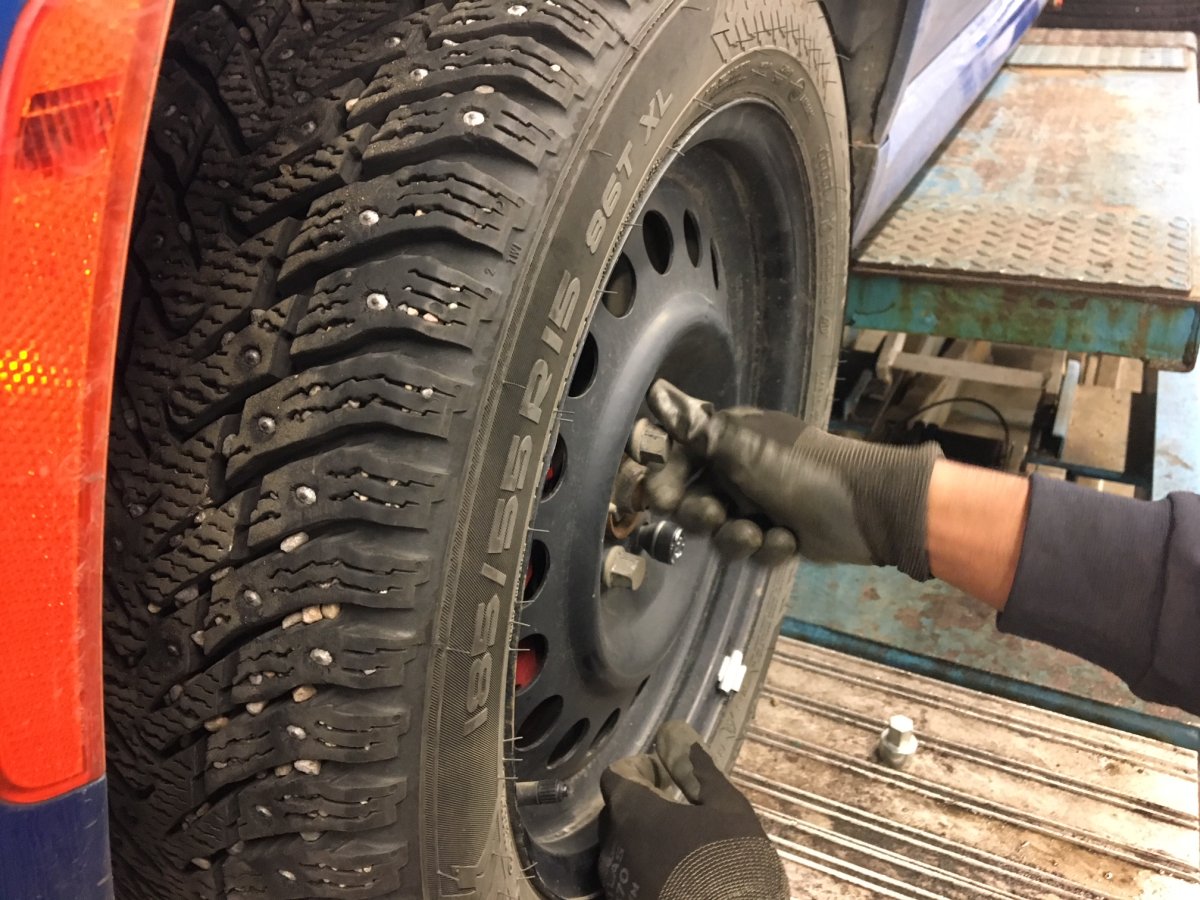It’s only been 10 days since the first day of fall, but with brisk and chilly temperatures cooling many parts of B.C., it feels like winter is just around the corner.

Those chilly temperatures led to snow falling across many B.C. mountain passes during the weekend, including seven cm on the Coquihalla Summit, 14 cm on the Pennask Summit (Okanagan Connector), 35 cm on the Kootenay Pass and 48 cm on the Paulson Summit on Highway 3.
And when the snow started falling, the phones began ringing off the hook at tire stores.
“Just this week, Saturday morning when it snowed in the mountains, that’s when everyone started phoning in,” said Alex Gerein, assistant store manager at OK Tire on Springfield Road in Kelowna.
“We went from booking one day in advance to booking a week in advance, in one afternoon.”
On Tuesday, B.C.’s annual mountain highway driving rule regarding winter tires kicked in. Vehicles travelling over mountain passes in the province must have tires with the label of M+S or the mountain snowflake symbol on them. Commercial trucks are also required to carry chains.
WATCH BELOW (Aired Sept. 25, 2019): Edmonton debate over road safety brings up winter tires question

Wes Ortwein, Okanagan zone manager for Kal-Tire, said the annual changeover crush starts around Sept. 20 and, pending weather conditions, ends around mid-to-late November.
“It varies year by year; it depends on when we get snow in the valley bottoms,” said Ortwein. “If there’s significant snow on the highways, we’ll usually be done by the third week of November.”
Ortwein said it can be difficult getting through due to increased, and sometimes extreme, volume in calls. A good option, though, was online booking, he noted.
WATCH BELOW (Aired Dec. 6, 2018): Winter driving safety tips

Both Ortwein and Gerein said the fall changeover crush is a much busier time than the spring changeover.
“Winter installations are by far the busiest,” said Ortwein. “The first week of October is usually our busiest week of the year.
“There’s that impending doom of winter is coming. In the spring, you don’t have any of that; it’s a lot more flexible. People take their time and it’s spread out over a much longer period.”
“A lot of people end up running out their winter tires,” said Gerein. “They get their winter tires put on in the fall and they don’t come back in the spring to get their summer tires on, because they don’t have enough tread left on their winters to run them again next winter.
“So they just burn them off and save their summers.”
WATCH BELOW (Aired Nov. 12, 2018): Why winter tires are important

Though snow has yet to fall, it will. And when that day eventually arrives, Gerein and Ortwein are predicting long hours.
“The busiest day, for sure that we’ll have, will be that first snowfall,” said Gerwein.
“As soon as that snowfall comes, everyone is coming in.”



Comments